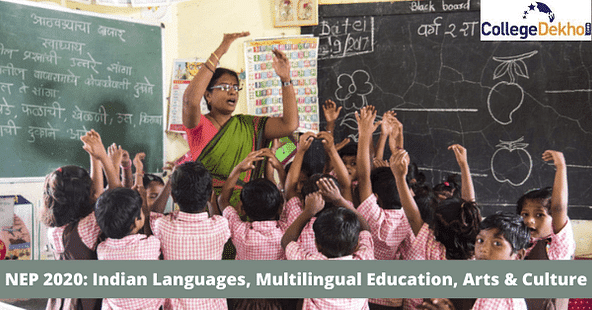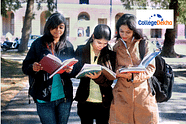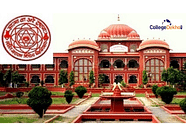Read this article to know about major changes in NEP 2020 with regards to the promotion of Indian Languages, Multilingual Education, Arts and Culture and how will it impact the overall education.

The Union Human Resource Development Minister Ramesh Pokhriyal ‘Nishank’ has introduced a New Education Policy (NEP) , starting from the year 2020. Through the new National Education Policy, several new regulations have been integrated into the school education and higher education (colleges, Institutes, and Universities). One of the major changes which NEP has brought about is the renaming of the Ministry of Human Resource Development (HRD) to the Ministry of Education.
As per the NEP 2020, India is a country with a treasure of cultural heritage in the forms of Arts, Custom, Literature, Tradition, Artifacts, and much more. This makes India one of the most visited countries for tourists who come to the country to experience the rich culture and heritage. That is why it is important to preserve the culture and wealth of India for the nation’s identity and its economy.
In the realm of that, NEP 2020 consists of some major changes in context to Promotion of Indian Languages, Multilingual Education, Arts and Culture which will be discussed in the article below.
Table of Contents
| NEP 2020: Promotion of Indian Languages | NEP 2020: Multilingual Education |
|---|---|
| NEP 2020: Arts and Culture | Impact of NEP 2020 Promotion of Indian Languages, Multilingual Education, Arts and Culture |
NEP 2020: Promotion of Indian Languages
India is a country with languages changing every 15 to 20 Kms according to the native communication style. In order to promote Arts & Culture, it is very important to promote Indian Languages. People in India talk to each other in their native language which also shows their culture and traditions through their language. Without the promotion of languages, it is not possible to promote Art, in the form of film, plays, literature, music, etc.
Indian languages have not received the proper recognition since the beginning which has led to a loss of over 200 languages in the last 5 years alone. As per UNESCO, over 190 languages have been declared ‘endangered’ which will become extinct with senior natives who speak the language.
Promotion of Indian Language
The promotion of Indian languages will be integrated into school and higher education at every level. In order to help students learn these languages, there will be ensured availability of high-quality learning materials in the form of workbooks, textbooks, magazines, videos, poems, plays, novels, etc. Moreover, the language must have a consistent update to their vocabulary in the dictionary so that the students can be provided with education in terms of the latest topics and issues of the country.
Language Vocabulary & Dictionary
The academics will be implemented for all the languages as determined in the eighth Constitution of India, for which teachers with high-level language proficiency of the language will be employed. Moreover, academicians will also consult with each other to prepare a language dictionary for the respective languages which will be used to study and for use in education, writing, journalism, speechmaking, and more. The dictionaries will be available in physical (books, print etc.) as well as web formats.
Online Portals, Web and Wiki
The languages of India, along with their art & culture will be documented through the online portals, web and wiki to preserve the native language and their knowledge. These platforms will consist of dictionaries, videos, recordings, people (especially elders) speaking the language, reciting poetry, telling stories, and performing folk songs, plays, dance, and much more. The general public, possessing a high-level knowledge of the language, will also be invited to contribute to the portal and add their own learning resources. These web portals will be managed by the Universities and their research team and will be funded by the NRF.
Scholarships and Incentives
Students will be provided with scholarships based on the language. Various awards and incentives will be provided for outstanding poetry and prose in Indian languages in terms of various categories which will be established to ensure vibrant novels, poetry, nonfiction books, journalism, textbooks, and other works. Moreover, proficiency in a language will also be considered as a major quality parameter at the time of employment.
NEP 2020: Multilingual Education
It is also important to emphasize the deliverance of education in different languages which will help the students to adapt to multilingual education. Moreover, multilingual education must be improvised in order to provide language education not only in terms of literature, grammar, and vocabulary of the language but also to interact with the students in the same language. Multilingual education must foster the extensive use of language for conversation and language-based teaching.
4 Year B.Ed Program
Teachers with a high-level knowledge of a particular language will be employed for providing education to the students for the respective language. There will be 4 year B.Ed degree introduced which will majorly focus on enhancing the knowledge about native languages through which students will be employed as a teacher for their language of expertise. The program will emphasise on producing high-quality teachers with expertise in language teaching and music, arts, philosophy and writing. The program will be divided into various departments such as Indian languages, Comparative Literature, Creative Writing, Arts, Music, Philosophy, etc.
Bilingual Programmes in Higher Education
The native language will also be used as the medium of instructions and for bilingual programmes in higher education. The 4 years B.Ed programme will also promote training the teachers to provide education in Science and Mathematics bilingually. The higher education will also integrate higher programmes and education in Translation and Interpretation, Archaeology, Art and Museum Administration Artefact Conservation, Web Design, and Graphic Design. Moreover, the tourism industry will also be strengthened by developing high-quality materials in various languages, promoting its art and culture, conserve artifacts, developing highly qualified individuals to manage and run museums, heritage, and tourist sites.
Tourism and Bilingual Learning
Through the policy, introducing students to the rich diversity of India will be emphasised which will also include enabling students for simple learning activities such as touring different parts of the country. This will not only help the students learn about their diversity, traditions culture, and knowledge of different parts of India but also boost Indian tourism.
Translation & Interpretation
The NEP 2020 also focuses on the translation of various written and speaking learning materials to the public in various Indian and foreign languages. An Indian Institute of Translation and Interpretation (IITI) will be established which will be responsible for translating the learning materials and providing multilingual language and subject experts.
Sanskrit Language into Mainstream Curriculum
Sanskrit will be integrated into the mainstream curriculum rather than being restricted to single-stream Sanskrit Pathshalas and Universities. The language will be provided to higher education in innovative and interesting ways along with other subjects such as Mathematics, Philosophy, Astronomy, Linguistics, Yoga, Dramatics, etc. The Department of Sanskrit which is responsible for teaching and research in terms of the Sanskrit language will be strengthened in terms of the multidisciplinary higher education system.
NEP 2020: Arts and Culture
Promotion of Indian Arts & Culture is a priority that will benefit not only the nation but also the individual. It is necessary to introduce students to their culture which will enable them to have a sense of belonging and identity and will also help them value their culture & traditions. The students must develop a strong sense of their own cultural history, languages, arts, and traditions which will also boost their self-esteem and benefit society as a whole.
Initiative to Promote Arts & Culture
Various initiatives will be taken to foster the promotion of Arts & Culture in schools and higher education such as to emphasise on Arts, Music and Crafts which will be included on every level, teaching and learning in the native language, experiential language learning and promotion of multilingualism through the implementation of three language formula. To promote Arts & Culture, there will also be hiring of local artists, craftspersons, writers, and experts who will be employed as master instructors in various subjects of local expertise. The promotion of Arts & Culture will also include the inclusion of native Indian languages including the tribal languages in the curriculum for Science, Arts, Humanities, and other streams. Moreover, there will be flexibility for the students to choose a balanced course; especially in higher education and secondary schools; and formulate personalised cultural, artistic and academic paths.
Impact of NEP 2020 Promotion of Indian Languages, Multilingual Education, Arts and Culture
As an impact of the changes introduced by NEP 2020 in terms of Promotion of Indian Languages, Multilingual Education, Arts and Culture, there will be more emphasis on the culture and heritage of the country. The languages which are on the brink of being extinct due to the lack of recognition will be revived and encouraged for speaking, writing and learning. The education will be more prone to multilingual learning rather than using just Hindi or English as the medium of teaching. These changes will also increase the employment opportunities for the teachers and subject matter experts of these languages.
Quick Links
A Common Entrance Examination for Admission to All Colleges - NEP 2020 |
|---|

















Similar Articles
Mumbai University PhD Admissions 2024: Merit Lists, Dates, Application, Entrance Exam
PGIMER M.Sc Entrance Exam 2024: Dates, Exam Pattern, Syllabus, Result, Counselling
What is a Good Score in UGC NET 2024?
Best Career Options After Qualifying UGC NET 2024
JENPAS UG 2024 Ranking Methodology
Top Institutes with 100% Job Placements in 2023-24: Highest Package, Key Recruiters